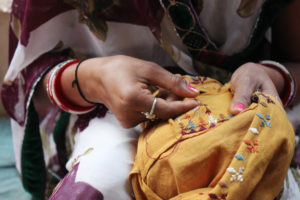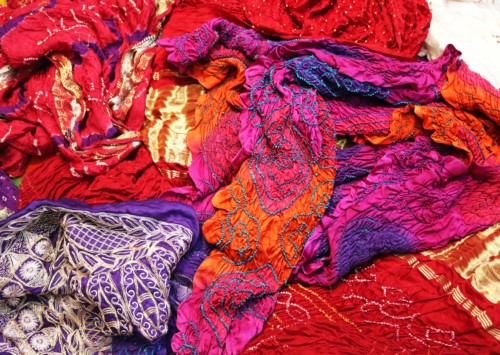Guarding the artwork from Kutch
India & You
Tucked away in one corner of the country, this art preservation centre is working towards conserving and propagating artwork from India’s largest district, Kutch. Referred to as Kutchi work, the distinctive thread and mirror work is unique to this part of India but is slowly loosening its ends to other places.
It has been structured in a traditional manner with round roofs and mud and mirror artwork on its walls. It stands out from the other old and dilapidated houses and buildings in the neighbourhood. It is well kept and the sign board outside is an indication enough that it is some kind of a centre. It reads ‘Kala Raksha Trust’, literally Art Preservation Trust. It is tucked away in the minimally developed neighbourhood of Sumrasar Sheikh, a village literally in one corner of India, in Kutch district of Gujarat. But the odds of its environs and other deficits do not pull away its management from working towards its goal.
Kala Raksha Trust came into function in 1993 and has since been working towards the preservation and development of Kutchi artwork, which is an amalgam of threads and mirrors. All the artisans at the trust are locals who inherited the craft of Kutchi work from their previous generations. By staging the works of these artisans on visible platforms, the trust is trying to make the Kutchi art traditionally and economically viable.
“We go out and conduct solo exhibitions in which these artisans also participate. This way the women get to go out and understand the market and analyse their audience so that they can customise their products accordingly,” says Mukesh Bhanani, manager at Kala Raksha Trust. “The woman artisans are well versed with their craft but are not too educated or socially aware; going out and interacting with people gives them an understanding of the market,” he explains.
On the other hand, the trust also conducts workshops at these exhibitions to make customers aware of the artwork from this remote Indian land. The trust exhibits at various blind schools and at Alliance Francaise, a French language teaching school in New Delhi. It also participates in the annual International Folk Art Market in Santa Fe.
Surfacing the art
Management at the trust understands the need of the right exposure and education the artisans need and has been taking the desired initiatives in uplifting them. “In 1998, we ran a primary education programme to teach our artists the fundamentals of mathematics and trade so they could price their products right and sell them,” says Bhanani. The programme is not functioning anymore as the new generation is exposed to basic education.
However, to upgrade the skills of its artisans and to bring them at par with industry standards the trust has come up with a new design programme. “We don’t want our artisans to be treated as labourers and thus, are working towards imbibing designing skills in them. In a year long course at our Kala Raksha Vidyalaya (Art Preservation School), the artisans are taught the various nuances of fashion designing and marketing. The only prerequisite for both male and female aspirants is the know-how of the Kutchi artwork,” says Bhanani, while adding, “Age is no bar either.”
The school that was started with help from the Government of India, the UNSECO and private donors has already educated more than hundred students who are surfacing the traditional threads on newer patterns. The Kala Raksha Trust now makes a host of products ranging from handbags, garments, home furnishings etc.
The efforts being taken by this one-of-a-kind centre in India are bearing fruits, slowly turning it into a brand and also catching the attention of some famous names in the fashion sphere. “Designers like Ritu Kumar, Anju Modi and Eileen Fisher have worked with our artists and created entire collections,” Bhanani tells us.
Slowly gaining fame, the Kutchi embroidery work is not just garnering the attention of designers but also designing students who come to the centre, stay there for weeks and learn the embroidery types such as Suf, Kharek and Paako from the people of Mutava, Rabari, Sameja, Garasia Jat and Maru Meghwal communities who are masters of the craft.
The artwork is now catching the curious and creative eyes of artists and designers who were earlier unaware of this art from Kutch. The centre’s social media campaigns are further bringing the hidden into limelight with their Twitter and Facebook pages feeding followers with updates on their activities.













